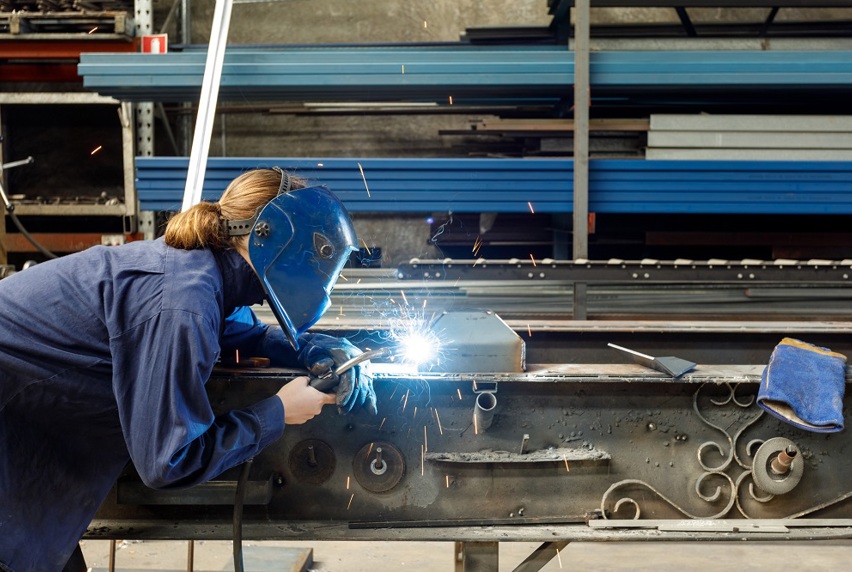How to get started in Construction Trades

Tradies – they’re in demand, they’re skilled and knowledgeable, they build, create, repair and improve (and they can also make a lot of money) So how do you do become one?
The first step is to decide which trade is for you. Do you want to be an electrician, carpenter, plumber or a bricklayer, painter and decorator, joiner or furniture maker? Can you picture yourself in that job, doing that kind of work every day?
Research your areas of interest, read and watch videos about the industry, talk to people already in the job, maybe even ask to spend some work time with them to find out what it’s really like.
Tradespeople learn their craft through an apprenticeship, four years of on the job training combined with Certificate III studies, one day a week or in blocks of time.
Finding an employer
So to get started in your chosen trade, you need to find an employer and sign up with an Australian Apprenticeship Support Network (AASN) provider, which manages your apprenticeship and training.
The job hunt could include researching big companies and major employers in your chosen field, checking out their websites and contacting Human Resources departments. Some employers advertise in September / October for apprentices to start next January / February with the new school year.
Small and medium sized employers can be reached by asking around, using your network of family and friends and clubs and sports team, telling everyone you’re looking for an apprenticeship. Suggest volunteering to work for day. If there’s a tradie working in your street, go talk to them!
Another good entry point to a trade is to do a Certificate II pre-apprenticeship course, as they are good tasters to confirm that’s what you want to do, teach basic knowledge and skills, the units of study are credited towards the qualification, and it shows a potential employer that you are committed to the trade.
How does it work?
It can take some time to find apprenticeships, which are open to both school leavers and older people - the process is the same for all.
Once the employer is secured and paperwork signed with the Apprenticeship Support Network provider, enrolment is arranged at the training organisation. The employer might have a preferred school, or it is chosen based on location, or if the student completed a pre-apprenticeship course.
The Melbourne Polytechnic enrolment is arranged and the new apprentice starts work and begins study, either one day a week (day release, the same day every week) or for a week at a time (block release, Monday to Friday, seven or eight times a year) for the four years.
One unit is studied at a time and assessments include computer-based knowledge tests, observation of practical activity in Melbourne Polytechnic’s well-equipped and state of the art workshops, assignments, or through the logbook which apprentices keep right through their training.
Working your way up
For first-year apprentice, you are earning as you learn and the pay goes up every year. Once you are finished your training you are fully qualified and can stay with your employer, find a new job or work for yourself in your own business. Depending on the trade, you may need further training, licensing or registration to go out on your own.
And there is plenty of work right now for qualified tradies. With Victoria’s Big Build project - level crossing removal, major roadworks, rail upgrades and new tunnels - skilled workers are in high demand and the trades / apprenticeships pathway offer a vast variety of different streams and roles.
With ever changing technology, there are jobs in the future that haven’t even been invented yet. And you can earn a lot.
Good money for your career
Melbourne Polytechnic engineering program leader Grant Collis says: ‘In Victoria plumbers are paid the most, followed by electricians. In other states it’s the other way round, but some of that's driven by mining.
‘University is not for everyone, the trades are good for people who want to use their hands. I call them doers. The way I learned is we watch someone do it, they watch us do it and then we do it independently.’
Peter Collins, Melbourne Polytechnic electrical program leader, says there is always work for an electrician and ‘the Victorian A grade electrical licence is viewed quite highly, around the world, not just in Australia’.
‘It’s a good career, you don’t know where you are going to end up,’ he says. He worked on the Snowy Hydro Scheme, others have spent time at the research station in Antarctica, on offshore oil rigs or underground mining in WA or Queensland.